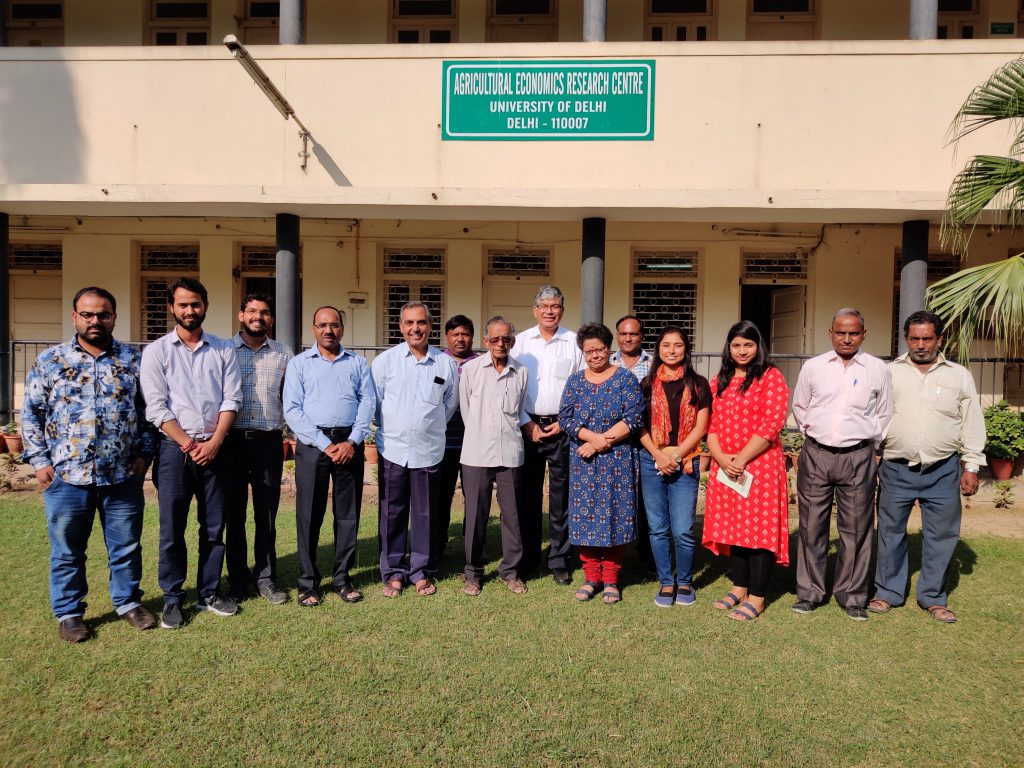Agricultural Economics Research Centre (AERC), Delhi, was established on 8 February, 1954 vide DO No.F.2-3/52-P.C.11 as a section of the Department of Economics, Delhi School of Economics, University of Delhi. AERC has been functioning as an independent Centre since 1960 and moved to its present building in 1961. The Centre was integrated with University of Delhi in 1987 vide ordinance XX-G of University of Delhi and has since functioned as a maintained institution of the University. A Governing Body (GB), with Vice Chancellor or his nominee as the Chairman/Chairperson, is the apex policy making body of the Centre. The GB is subject to the general supervision of the Executive Council of the Delhi University. The GB is authorized to constitute an Academic Advisory Committee to guide the academic activities of the Centre. The list of eminent economists who headed the Centre includes Professor Amartya Sen, Professor B.N. Ganguli and Professor Raj Krishna among others. The Centre is fully funded by the Ministry of Agriculture and Farmers’ Welfare, Government of India (MoA&FW). The Centre carries out research on agriculture and rural economy. More than two hundred research studies have been completed since inception, covering a wide range of topics in the field of agriculture and rural development and these studies have significantly contributed to policy formulation.
The Centre made pioneering contributions in the 1960s to the field of Continuous Village Studies (CVS) of the rural economy, which involved studying a specific set of villages at periodic intervals to understand the emerging dynamics of rural growth process. These studies provided the benchmark for subsequent work by other institutions (such as ICRISAT) and researchers. In addition to the CVS, the Centre made key contributions in several other areas. Some of the important areas where the Centre made important contributions include agricultural growth and productivity; input consumption patterns; patterns of agricultural mechanization; decentralized planning at district level; women’s role in agriculture etc. The Centre provides quarterly inputs to Government of India on fifteen key indicators relating to current agricultural situation in the states of Haryana and Uttarakhand. These indicators include cropped area; rainfall deficiency; fertilizer availability; pest prevalence; input prices; wage rate etc.
The Centre is planning to further diversify and substantially expand the research program to study the non-farm economy; avenues for diversification of rural incomes; agrarian distress & farmers suicides; agricultural growth and its determinants; agricultural price policy; crop insurance; food inflation; public distribution system and NFSA; nutrition; agricultural markets & price formation etc

Research studies
Village Surveys
Staff Strength





